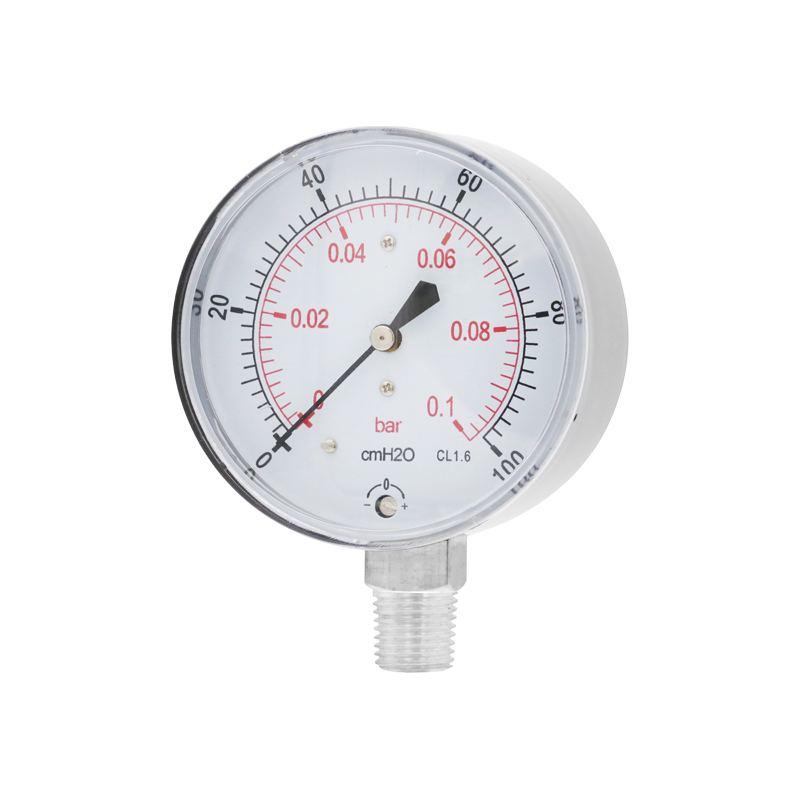
Nov . 24, 2024 01:39 Back to list
bourdon tube pressure gauge with diaphragm seal service
Bourdon Tube Pressure Gauge with Diaphragm Seal An Essential Tool for Fluid Measurement
In industrial applications, accurate pressure measurement is crucial for ensuring operational efficiency and safety. One of the most reliable instruments for this purpose is the Bourdon tube pressure gauge. When combined with a diaphragm seal, this gauge becomes an even more versatile tool for various demanding environments, including those dealing with corrosive fluids, high temperature, or high pressure scenarios.
What is a Bourdon Tube Pressure Gauge?
A Bourdon tube pressure gauge is a mechanical device that measures pressure using a curved tube, known as a Bourdon tube. When pressure is applied to the inside of the tube, it tends to straighten out, causing the free end to move. This movement is transmitted through a series of levers to a needle on a dial, providing a direct reading of the pressure.
Bourdon tubes are typically made from materials such as brass, stainless steel, or bronze, which allows them to withstand different environmental conditions. Their simplicity and reliability make them popular in various industries, including oil and gas, pharmaceuticals, and food processing.
The Importance of Diaphragm Seals
While Bourdon tubes are effective, they may not be suitable for all applications, especially those involving aggressive or hazardous fluids. This is where diaphragm seals come into play.
A diaphragm seal is a barrier that isolates the pressure gauge from the process medium. It typically consists of a flexible membrane (the diaphragm) that is mechanically linked to the Bourdon tube. This design helps in several ways
1. Corrosion Resistance In applications where the fluid is corrosive or viscous, a diaphragm seal protects the Bourdon tube from direct contact, extending the life of the pressure gauge.
bourdon tube pressure gauge with diaphragm seal service

2. High-Temperature and High-Pressure Applications Diaphragm seals can effectively handle extreme pressures and temperatures, making them suitable for steam systems and other challenging applications.
3. Reduced Maintenance By isolating the gauge from the process fluid, diaphragm seals reduce the likelihood of clogs and leaks, resulting in lower maintenance requirements and improved reliability.
4. Accurate Readings The use of a diaphragm ensures that the pressure readings remain accurate, even in fluctuating pressure conditions. The diaphragm's flexibility allows it to respond quickly to pressure changes, reducing lag in measurement.
Applications of Bourdon Tube Pressure Gauges with Diaphragm Seals
Bourdon tube pressure gauges with diaphragm seals are utilized in a wide range of industries
- Chemical Processing For measuring corrosive substances, these gauges ensure safe and reliable operations. - Oil and Gas In upstream and downstream operations, accurate pressure measurements are essential for safety and efficiency. - Food and Beverage Ensuring that pressure remains stable in processing equipment is critical for product quality and safety. - Pharmaceuticals In sterile environments, maintaining accurate pressure readings without contamination is vital.
Conclusion
The combination of a Bourdon tube pressure gauge with a diaphragm seal is a powerful solution for businesses that require precise pressure measurements in hostile environments. By protecting the gauge from corrosive or viscous fluids and accommodating extreme temperature and pressure conditions, this setup ensures reliability and durability.
In today’s rapidly evolving industrial landscape, maintaining the highest standards of measurement accuracy is essential for operational excellence. Whether in a chemical plant or a food processing facility, incorporating a Bourdon tube pressure gauge with a diaphragm seal can provide peace of mind, knowing that pressure readings are accurate and dependable, ultimately contributing to the success of various industrial processes. As industries continue to evolve, tools like this will remain indispensable for ensuring safety, efficiency, and quality.
-
Bourdon-Type Differential Pressure Gauges High Accuracy & Affordable Pricing
NewsMay.22,2025
-
Vacuum Differential Pressure Gauges High-Precision Solutions & Quotes
NewsMay.22,2025
-
Durable Diaphragm Pressure Elements High Accuracy & Custom Quotes
NewsMay.22,2025
-
AG Precision Pressure Gauges High Accuracy & Global Exporters
NewsMay.21,2025
-
Ashcroft Diaphragm Pressure Gauges Precision & Durability
NewsMay.21,2025
-
Micro Differential Pressure Gauges High-Precision & Compact Solutions
NewsMay.20,2025
